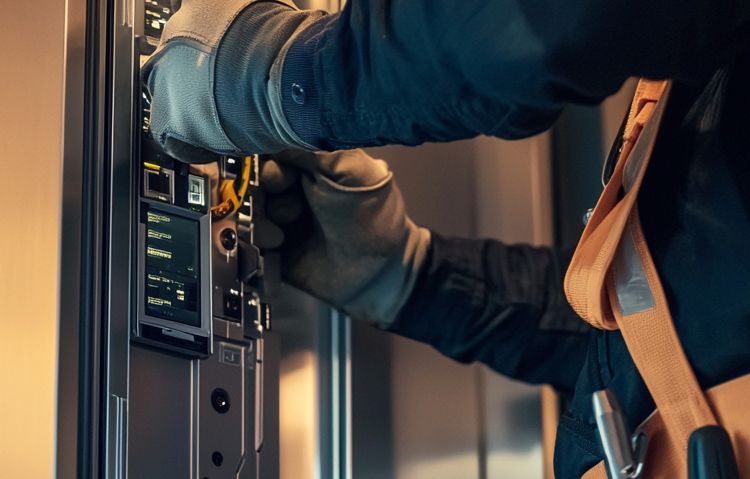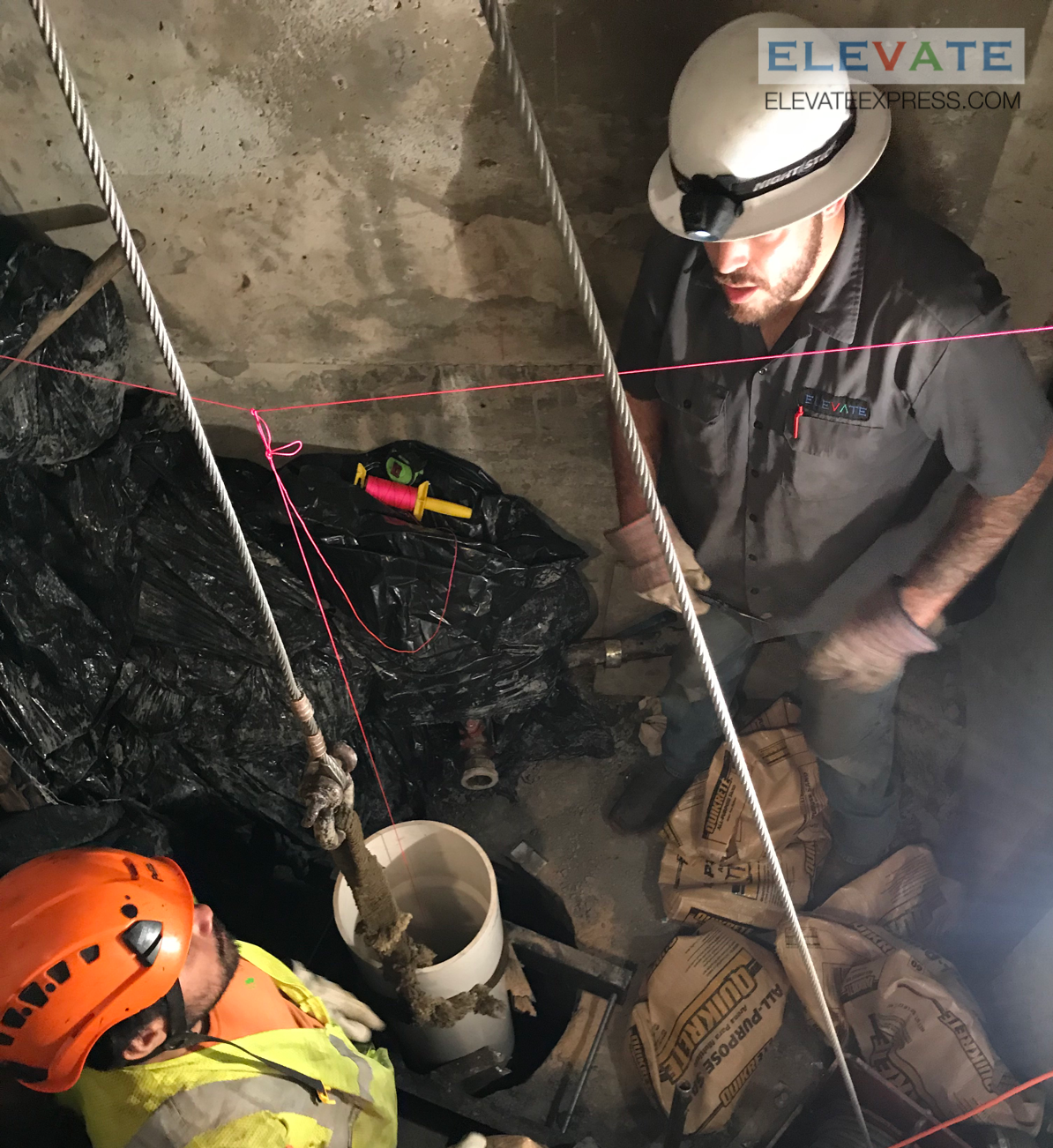Common Elevator Problems and How to Prevent Them
Elevators: Essential Yet Prone to Issues
Elevators are integral to commercial buildings, residential complexes, and industrial facilities, ensuring seamless vertical transportation. However, frequent use, mechanical wear, and improper maintenance can lead to malfunctions. Understanding common elevator problems and implementing proactive measures can minimize downtime, enhance safety, and prolong system longevity.
Frequent Elevator Breakdowns: Causes and Prevention
Mechanical Wear and Tear
Elevators operate under constant strain, leading to component degradation. Over time, pulleys, cables, and control systems wear out, resulting in frequent breakdowns. In a commercial hub like San Antonio, which is home to over 1,000 high-rise buildings, frequent elevator use puts added strain on mechanical components. Regular inspections help mitigate wear and ensure seamless operation in high-traffic areas.
How to Prevent It:
- Schedule routine elevator inspections to detect early signs of wear.
- Apply lubrication to moving components to reduce friction and extend equipment life.
- Replace worn-out cables, pulleys, and motors before they fail.
Power Failures and Electrical Issues
Unstable power supply, faulty wiring, and tripped circuit breakers can cause sudden elevator shutdowns.
Prevention Strategies:
- Use uninterruptible power supplies (UPS) and other backup systems to keep operations running during power failures.
- Inspect electrical connections and breakers for wear or damage.
- Upgrade outdated elevator control panels to modern, energy-efficient models.
Slow Elevator Response Times
Overloaded Control Systems
Elevator control panels regulate movement, but excessive demand or software glitches can cause delays.
How to Avoid It:
- Upgrade to advanced control systems for optimized traffic management.
- Adjust software settings to balance load distribution.
- Regularly test response times to identify inefficiencies.
Hydraulic System Failures
In hydraulic elevators, leaks or low fluid levels can lead to sluggish operation.
Prevention Techniques:
- Ensure optimal performance by maintaining proper hydraulic fluid levels.
- Inspect seals and valves for leaks or blockages.
- Flush and replace hydraulic oil periodically to maintain system efficiency.
Elevator Door Malfunctions
Stuck or Misaligned Doors
Obstructed or misaligned doors can trap passengers or prevent the elevator from operating properly. For San Antonio’s thriving tourism industry, where over 35 million visitors rely on elevators in hotels and attractions like the Tower of the Americas, reliable door sensors are critical to ensuring passenger safety and accessibility.
Preventive Measures:
- Clean door tracks and sensors regularly to remove debris.
- Adjust alignment and tension of door mechanisms.
- Ensure photoelectric sensors function correctly to detect obstructions.
Sensor Failures
Faulty sensors can cause doors to close prematurely or fail to detect passengers.
How to Fix It:
- Test and calibrate sensors to improve accuracy.
- Replace malfunctioning sensors promptly.
- Keep sensor lenses clean and free of dirt or moisture.
Sudden Elevator Jerks and Uneven Leveling
Worn-Out Braking System
A faulty braking system can cause the elevator to stop abruptly, leading to unsafe rides.
Prevention Steps:
- Inspect brake pads and shoes for wear and tear.
- Adjust tension in braking systems to ensure smooth stopping.
- Lubricate brake components to prevent abrupt halts.
Misaligned Elevator Cables
Cables control elevator movement, and misalignment can cause uneven leveling.
Maintenance Tips:
- Inspect cables and counterweights for proper alignment.
- Recalibrate the leveling system to ensure smooth landings.
- Tighten or replace worn cables as necessary.
Overheating of Elevator Components
Motor and Machine Room Ventilation Issues
Inadequate cooling can cause motor overheating, leading to system failures. San Antonio’s extreme summer heat, which often exceeds 100°F, increases the risk of motor and hydraulic system overheating. Proper ventilation and cooling mechanisms are essential to prevent costly shutdowns.
How to Prevent Overheating:
- Ensure proper ventilation in machine rooms.
- Install cooling fans or air conditioning units.
- Regularly check temperature levels of motors and drive systems.
Excessive Friction in Moving Parts
Friction generates heat, accelerating wear and increasing the risk of breakdowns.
Preventative Maintenance:
- Apply high-quality lubricants to gears, rollers, and bearings.
- Replace worn bearings to reduce friction.
- Keep mechanical components clean to prevent overheating.
Emergency Failures and Passenger Entrapment
Malfunctioning Emergency Systems
Faulty emergency brakes, alarms, or communication devices can put passengers at risk.
Prevention Tactics:
- Test emergency brakes, alarms, and intercoms regularly.
- Install reliable two-way communication systems.
- Train staff on emergency response protocols.
Lack of Regular Safety Inspections
Neglecting routine safety checks can result in catastrophic failures.
Safety Measures:
- Adhere to regulatory inspection schedules.
- Work with certified elevator technicians for comprehensive safety audits.
- Upgrade outdated systems to meet modern safety standards.
Key Takeaways: How to Keep Elevators Running Smoothly
- Routine maintenance prevents common mechanical failures and extends equipment life. Regular servicing identifies and resolves minor issues before they become major problems, ensuring consistent performance and reducing costly repairs.
- Upgrading outdated control systems improves efficiency and reduces delays. Modernized elevators operate faster, consume less energy, and integrate with smart building technologies for improved traffic flow and user experience.
- Ensuring proper lubrication and ventilation prevents overheating and excessive wear. Well-maintained components experience less friction, reducing stress on mechanical parts and preventing premature system failure.
- Regular inspections reduce the risk of emergency failures and enhance passenger safety. Scheduled evaluations help detect potential hazards early, ensuring compliance with safety regulations and minimizing operational disruptions.
- Proactive troubleshooting can prevent costly breakdowns and unplanned downtime. Monitoring performance trends and addressing irregularities early enhances reliability, lowers long-term expenses, and ensures smooth, uninterrupted operation.
Why Choose Us for Your Elevator Solutions?
At Elevate Enterprises, we are dedicated to providing elevator solutions with a focus on reliability, precision, and expertise. Our certified professionals ensure that every installation, modernization, and maintenance service meets the highest industry standards. Here’s why Elevate Enterprises is the preferred choice for elevator solutions.
1. Industry-Leading Expertise
Our technicians have extensive hands-on experience, servicing a wide range of elevator brands and models. Their expertise ensures smooth operation, code compliance, and peak performance for all types of buildings. With a deep understanding of elevator mechanics and modern technology, we provide tailored solutions that enhance efficiency and reliability.
2. Comprehensive Elevator Services
We offer full-spectrum elevator services, including routine maintenance, emergency repairs, modernizations, and new installations. Our proactive approach minimizes unexpected breakdowns and costly downtime, extending the life of your equipment. Whether you manage a commercial, residential, or industrial property, our customized solutions optimize performance and safety.
3. Cutting-Edge Technology
We leverage advanced elevator control systems, smart diagnostics, and energy-efficient components to improve performance and reduce operational costs. Our state-of-the-art technology enables predictive maintenance, allowing early detection of potential issues before they become major problems. This innovation ensures seamless operation, lower downtime, and enhanced energy savings.
4. Unmatched Safety Standards
Safety is at the core of everything we do. We strictly adhere to local and national safety codes, conducting thorough inspections and rigorous testing to ensure passenger security and system reliability. For businesses in San Antonio’s competitive commercial real estate market, elevator downtime can lead to a 20% drop in tenant retention. Our proactive maintenance services help prevent disruptions, ensuring smooth operation and tenant satisfaction.
Frequently Asked Questions
1. How often should elevators be serviced?
Elevators should undergo routine maintenance at least once a month to ensure smooth operation, compliance with safety regulations, and early detection of potential issues. The frequency may vary based on usage, building type, and manufacturer recommendations. Regular servicing helps prevent unexpected breakdowns, extend equipment lifespan, and enhance passenger safety, making it a crucial aspect of property management for residential, commercial, and industrial buildings.
2. What are the signs that an elevator needs repairs?
Common signs indicating the need for repairs include slow response times, unusual noises, jerky movements, and frequent breakdowns. Other warning signs include door malfunctions, overheating, or inconsistent floor leveling. Addressing these issues promptly prevents costly repairs, improves ride quality, and ensures safety compliance. Routine inspections can help identify problems early, allowing for timely fixes before they escalate into major mechanical failures.
3. What is elevator modernization, and when is it needed?
Elevator modernization involves upgrading outdated components, such as control systems, motors, and safety features, to enhance efficiency, reliability, and compliance with current codes. It’s typically needed when an elevator is 15–20 years old or experiencing frequent breakdowns, high energy consumption, or slow performance. Many of San Antonio’s commercial and residential buildings are over 30 years old, making elevator modernization a necessity. Upgrading outdated components enhances efficiency and ensures compliance with evolving safety codes.
4. What should building owners do in case of an elevator emergency?
In an elevator emergency, such as a sudden stop or entrapment, building owners should ensure passengers remain calm and use the emergency communication system to call for assistance. Contacting a licensed elevator technician immediately is essential. Regular emergency preparedness training and 24/7 service contracts can help minimize downtime and ensure a fast, professional response to unexpected issues.
Conclusion: Ensuring Reliable Elevator Performance
Understanding common elevator problems—such as door malfunctions, slow operation, unusual noises, and frequent breakdowns—helps building owners and facility managers take proactive steps to prevent costly repairs and downtime. Regular maintenance, professional inspections, and timely upgrades are essential for keeping elevators safe, efficient, and compliant with industry standards.
By implementing a preventive maintenance plan, addressing minor issues before they escalate, and working with experienced elevator service providers, you can extend the lifespan of your system while ensuring smooth, uninterrupted operation. Prioritizing elevator upkeep not only enhances passenger safety and convenience but also protects your investment in the long run.
Elevate Safety with Expert Maintenance
Regular maintenance and timely upgrades prevent common elevator problems, ensuring passenger safety and system reliability. Whether you need routine inspections, emergency repairs, or modernization services, our team of certified technicians is ready to assist.
Schedule a consultation today and keep your elevators operating at peak performance!


